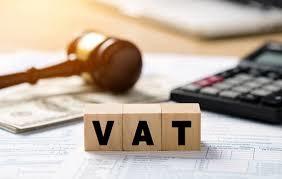Demystifying VAT Returns: Your Guide to Compliance and the Value of Professional Services in the UK

For UK business owners, the Value Added Tax (VAT) return represents one of the most consistent and complex administrative responsibilities. Submitting this document to HM Revenue & Customs (HMRC) is a mandatory requirement for registered businesses, yet its intricacies often lead to confusion, errors, and significant stress. However, with a clear understanding of the process and the support of a professional VAT return service, what seems like a daunting chore can be transformed into a streamlined and efficient aspect of your financial management.
This comprehensive guide will walk you through the fundamentals of UK VAT returns, outline the common challenges businesses face, and demonstrate how leveraging expert services can ensure compliance, optimise your financial position, and provide invaluable peace of mind.
Understanding the Fundamentals: What is a VAT Return?
A VAT returns is a formal summary that every VAT-registered business must submit to HMRC, typically on a quarterly basis. Its primary purpose is to calculate the net amount of VAT owed to the government or to be reclaimed. This calculation hinges on two critical figures:
-
Output VAT: This is the VAT you charge your customers on the taxable goods or services you sell. As a VAT-registered business, you act as a collection agent for HMRC, and this money must be handed over.
-
Input VAT: This is the VAT you have paid to other VAT-registered businesses on purchases essential for your operations. This can include costs such as raw materials, office supplies, equipment, utility bills, and professional services.
The core calculation is straightforward: Output VAT minus Input VAT.
-
If the result is a positive number, you pay this amount to HMRC.
-
If the result is a negative number, you are eligible to reclaim this money from HMRC.
VAT Registration: Is It Mandatory for Your Business?
The requirement to register for VAT is triggered when your business's taxable turnover exceeds the government-set threshold in any rolling 12-month period—not just your financial year. The threshold is currently £90,000 (for the 2024/25 tax year).
Crucially, you must register within 30 days of the end of the month in which you exceeded the threshold. Failure to do so can result in penalties and backdated payments.
Many businesses also choose to register voluntarily even if their turnover is below the threshold. This can be beneficial for several reasons:
-
Reclaiming VAT: You can reclaim VAT on your business expenses, improving cash flow, especially for startups with significant initial investments.
-
Business Perception: Being VAT-registered can enhance your company's credibility, making it appear larger and more established to potential clients and suppliers.
The Process: Filing Under Making Tax Digital (MTD)
A seismic shift in UK tax administration has been the introduction of Making Tax Digital (MTD) for VAT. This initiative mandates that businesses must:
-
Keep digital records using MTD-compatible software.
-
File their VAT returns digitally directly from their software via an Application Programming Interface (API).
The traditional HMRC online portal is no longer sufficient for most businesses. The current digital VAT return form requires you to fill key boxes, including:
-
Box 1: VAT due on sales and other outputs.
-
Box 4: VAT reclaimed on purchases and other inputs (this period).
-
Box 5: Net VAT to pay to HMRC or reclaim (the difference between Box 1 and Box 4).
-
Box 6: Total value of sales and other outputs, excluding VAT.
-
Box 7: Total value of purchases and other inputs, excluding VAT.
Accurately completing these boxes requires meticulous digital bookkeeping and a firm understanding of what constitutes a valid VATable expense.
The Pitfalls: Why Businesses Struggle with VAT Returns
Navigating VAT returns alone is fraught with potential hazards. Common challenges include:
-
Complex VAT Rules: Misunderstanding the various VAT rates (standard 20%, reduced 5%, zero 0%) and the rules for exempt supplies can lead to incorrect calculations.
-
Partial Exemption: If your business makes any exempt supplies, you enter a complex world of calculations to determine how much input VAT you can reclaim.
-
Mixed-Use Assets: Apportioning VAT correctly on assets used for both business and personal purposes (e.g., a vehicle) requires careful and consistent calculation.
-
Time Consumption: The process of recording every transaction, ensuring invoices are valid, reconciling figures, and filing the return is incredibly time-consuming, diverting focus from revenue-generating activities.
-
The Penalty Regime: HMRC’s points-based penalty system for late submissions and payments means that errors or oversights, even if unintentional, can quickly accumulate into substantial financial penalties.
The Strategic Solution: Engaging a Professional VAT Return Service
This is where a professional VAT return service uk becomes an invaluable asset. Far from being just an administrative cost, it is a strategic investment in your business's financial health and operational efficiency. These services, offered by qualified accountants and bookkeepers, manage the entire process on your behalf.
A comprehensive service typically includes:
-
MTD-Compliant Software Setup: Guidance on choosing and implementing the right digital accounting software (e.g., Xero, QuickBooks) for your business needs.
-
Digital Bookkeeping: Processing your sales and purchase invoices, coding transactions correctly, and maintaining pristine digital records that are always audit-ready.
-
Accurate Return Preparation: An expert prepares your return, applying their in-depth knowledge of VAT legislation to ensure full compliance and maximise legitimate VAT reclaims.
-
Secure Electronic Filing: Submission of the return directly to HMRC via their approved software, ensuring deadlines are never missed.
-
Payment and Refund Management: Clear advice on payment deadlines and follow-up on any VAT refunds you are owed, improving your cash flow.
-
Proactive Advisory: The greatest value lies here. Your advisor becomes a strategic partner, offering guidance on the most beneficial VAT schemes (e.g., Flat Rate, Annual Accounting), helping with VAT planning, and providing insights to improve your financial efficiency.
Selecting the Right Service Provider for Your Business
When choosing a VAT return service, consider the following:
-
Credentials and Expertise: Look for firms with qualified accountants (ACA, ACCA) or certified bookkeepers who specialise in UK VAT.
-
Technology: Ensure they use modern, cloud-based platforms that allow for seamless collaboration and real-time access to your financial data.
-
Communication: Choose a provider known for clear, responsive communication. You need a partner who is accessible and can explain complex issues in simple terms.
-
Fee Structure: Seek transparency. Many firms offer fixed-fee monthly packages that bundle bookkeeping and VAT services, providing predictability and often better value than hourly rates.
Conclusion: Transforming Compliance into Confidence
The VAT return is an inescapable feature of the UK business landscape. While its complexities are real, they need not be a source of anxiety or a drain on your valuable time. Attempting to navigate the maze of MTD, VAT rates, and HMRC regulations alone is a high-risk strategy.
Engaging a professional VAT return service is a decisive step towards securing your business's compliance and financial optimisation. It alleviates administrative burden, mitigates the risk of penalties, and unlocks strategic advice that can positively impact your bottom line. Ultimately, it is an investment that pays for itself by freeing you to focus on your core objective: growing a successful and sustainable business. In the demanding world of entrepreneurship, that peace of mind is priceless.








